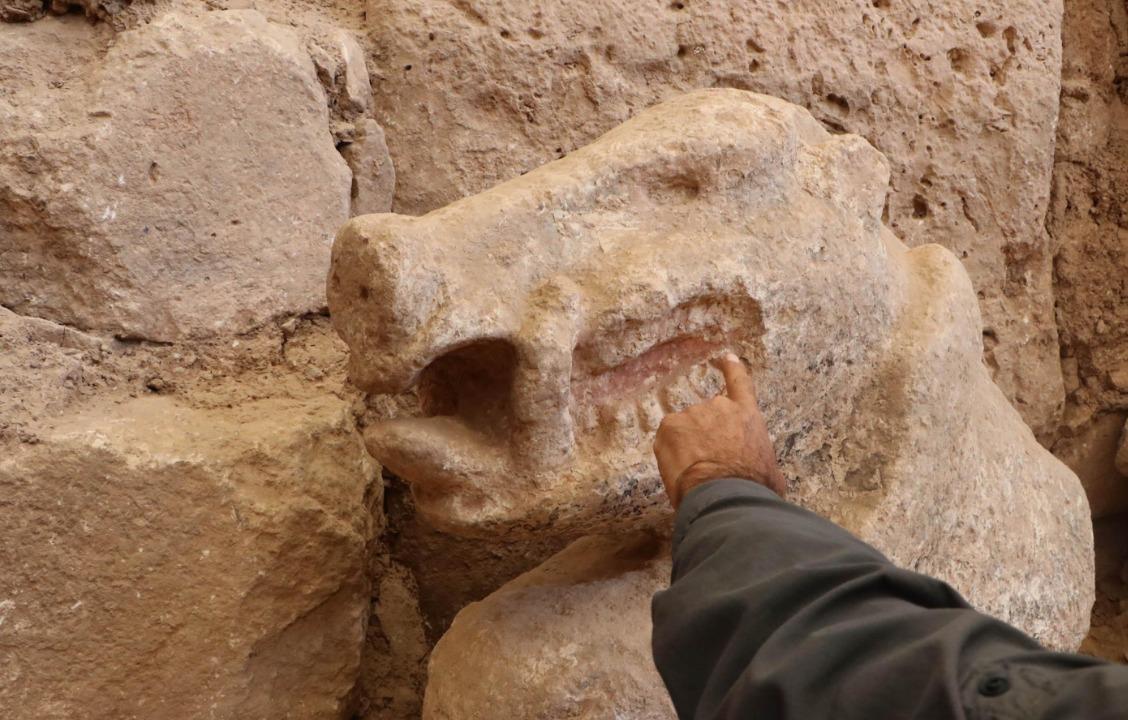
Speaking about the statues found in Göbeklitepe and Karahantepe, the head of Göbeklitepe excavations, Professor Necmi Karul said, "Göbeklitepe is one of the settlements on the UNESCO World Heritage List, but its discoveries have not ended and will continue to excite us from now on."
The first life-sized painted wild boar statue made of limestone has been recently unearthed during the excavations carried out by the Culture and Tourism Ministry in Göbeklitepe in the southeastern province of Şanlıurfa, which is considered the "zero point of history" with its 12,000 years of history.
The artwork, on which red, white and black pigment residues can be seen, is the first painted sculpture from that period.
Also, during the excavations carried out in Karahantepe, one of the realistic human statues of the period has been brought to light. The statue, which is 2.3 meters high, is reported to be one of the examples of the prehistoric art. The two statues caused great excitement in the world of archaeology.
Explaining that they carried out studies at nine points within the scope of the Taş Tepeler (Stone Hills) project, Karul said, “We have come to the end of these works. The 'D' building is where one of the important structures is located. There is a wild boar statue unearthed inside the giant structure in Göbeklitepe. The wild boar statue is located on one side of the axis between the two central obelisks in the structure. Generally, we see in such buildings that these locations differ from the rest of the building, and we knew that they left the artworks in their original positions, and that those works were consciously preserved in place like obelisks when the buildings were buried. We didn't have many finds regarding these, at least these parts of 'Structure D' had not been excavated yet.”
Stating that they continued excavations in this area this year, Karul said, “This statue depicts a wild boar. It is noteworthy that, as in all animals found here before, it is in an attack position and its aggression is emphasized with its teeth. Again, gender is an issue in the sculptures of this period. We know that all of the statues and reliefs represent masculine individuals. The difference of this statue is that it is painted. Its tongue and the hair layer on it were painted in their original colors. This makes this artwork different.”
Broken deliberately
Stating that the work in Karahantepe has come to an end for this year, Karul said, "The presence of statues and stone plates in the public building here shows us that they were buried deliberately. It shows that they were partially destroyed before being buried. One of the newly found artifacts here is a human statue. The statue, which is approximately two meters and 30 centimeters in size, is in a sitting position. The statue is in a human size. There is a relief of hands on the side of the statue. He is holding his bell jar with his hand below his waist. Right next to this, a vulture statue placed on the wall and stone plates left on the floor have been found. We believe that this statue was broken deliberately. We separate all the stones found here.”
Lee Claere, coordinator of the German Archaeological Institute, which carry out excavations in the Göbeklitepe area, stated that they, as a team, were very happy about the discovery and said, "As the German Archaeological Institute, we have been working in Göbeklitepe since 1995. We did our excavation this year. This year, we found this wild boar statue. It is a very important discovery, a very large statue. We see that it is 130 centimeters tall and has paint on its body. Its tongue is red, black and white. That's why it's a very exciting find for us. We are very happy.”